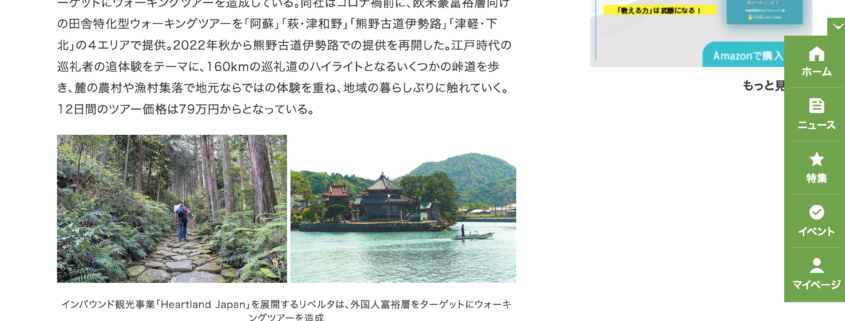Keijiro Sawano, CEO of Heartland Japan (Liberta Inc.), assisted in the planning of a major feature in the subscription magazine “Nodule” (JTB Publishing) has published as an interview.
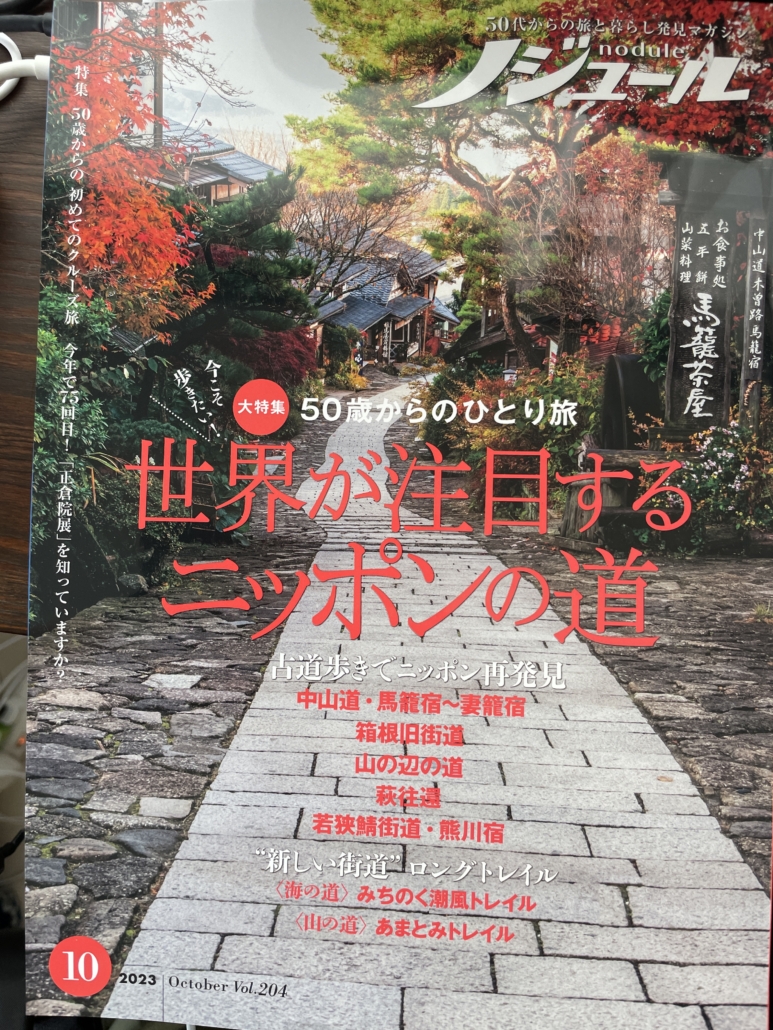
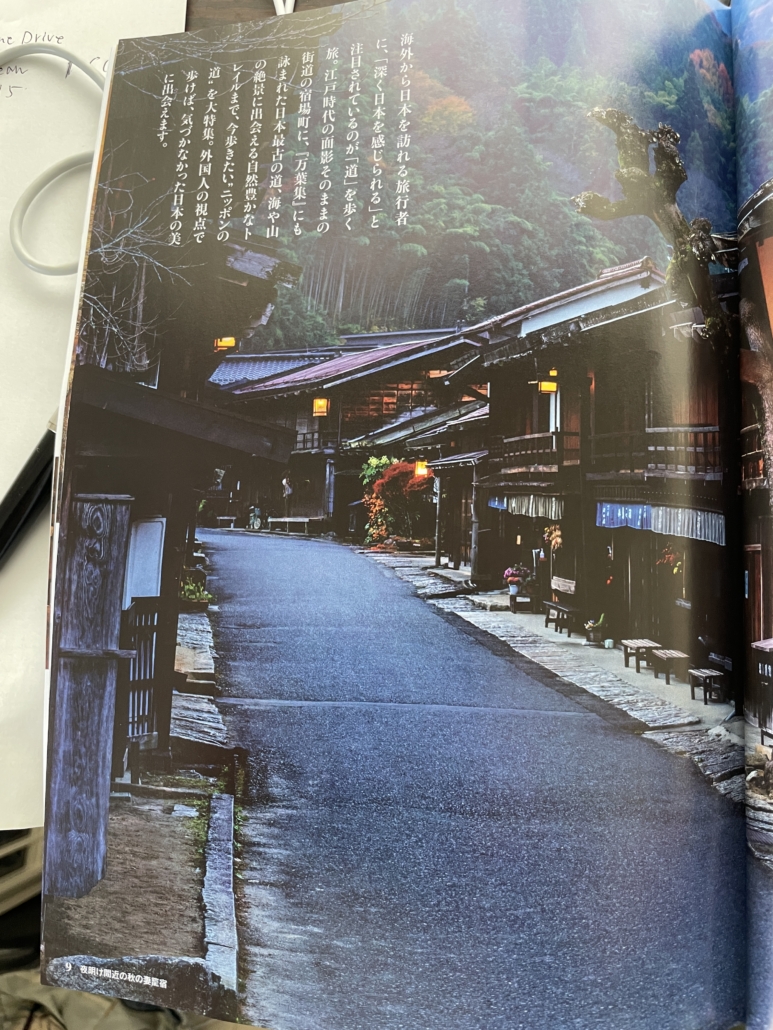
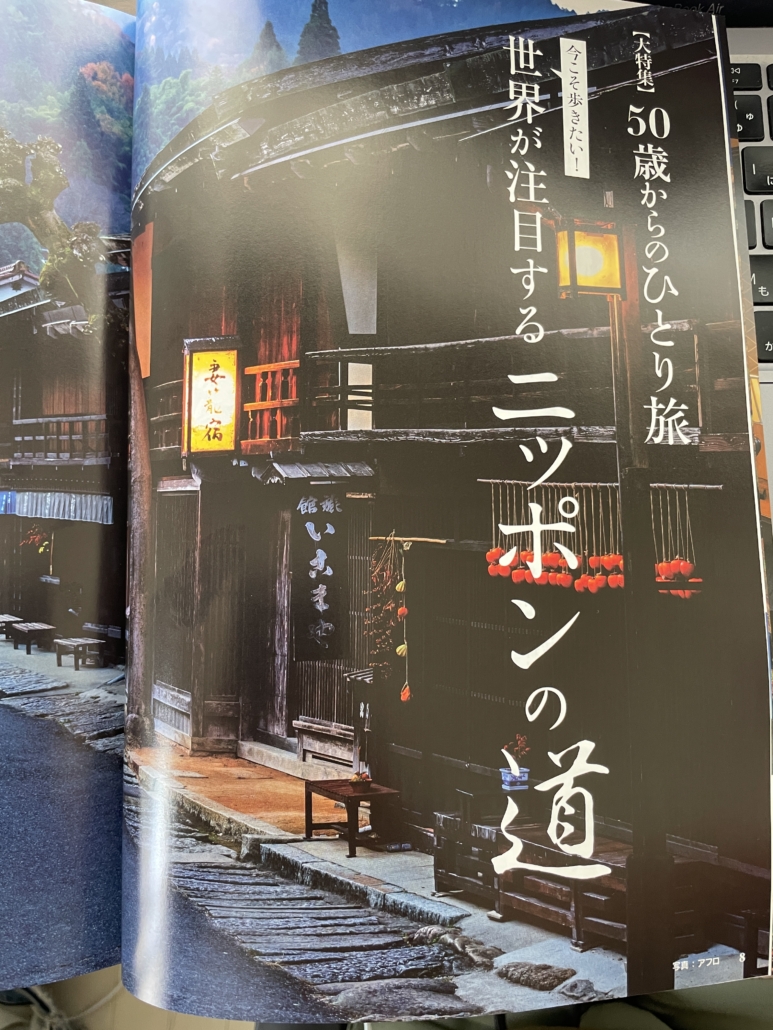
The theme of the feature was “Japan’s ancient roads that are attracting the world’s attention”.
He was asked to convey the appeal of Japan’s ancient highways from a foreigner’s point of view.
This is exactly what we at Heartland Japan do on a daily basis. It was a great pleasure for all of us at Heartland Japan to be able to present this concept as it is in the feature article.
The 62-page feature includes a 4-page interview with Keijiro Sawano.
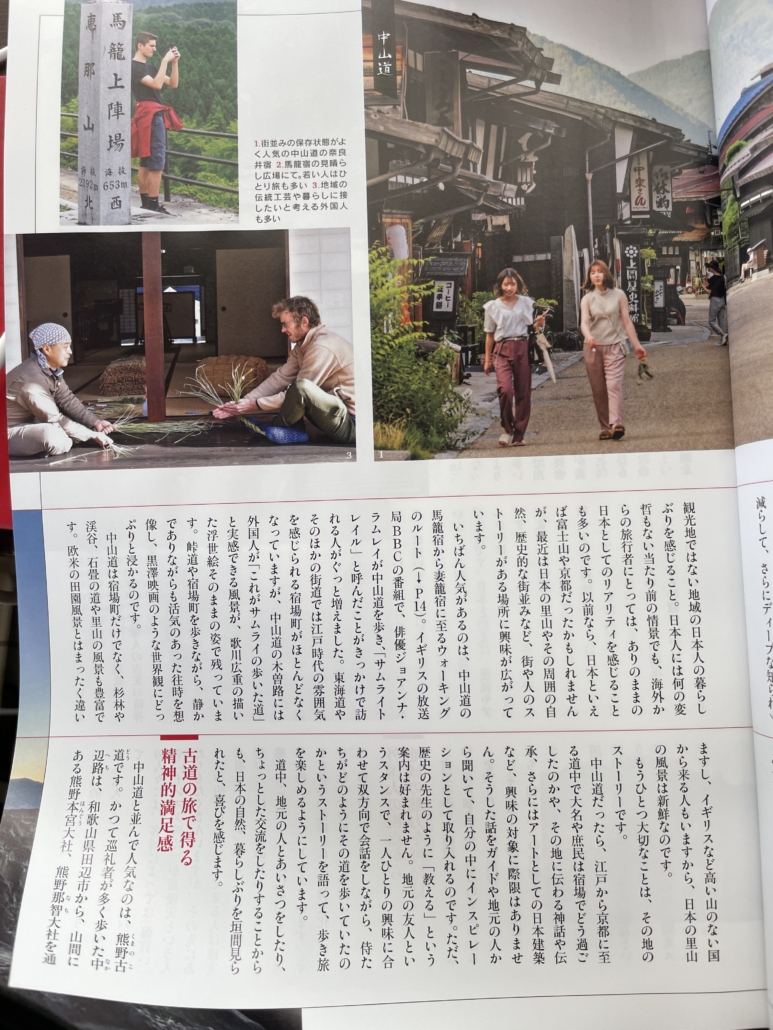
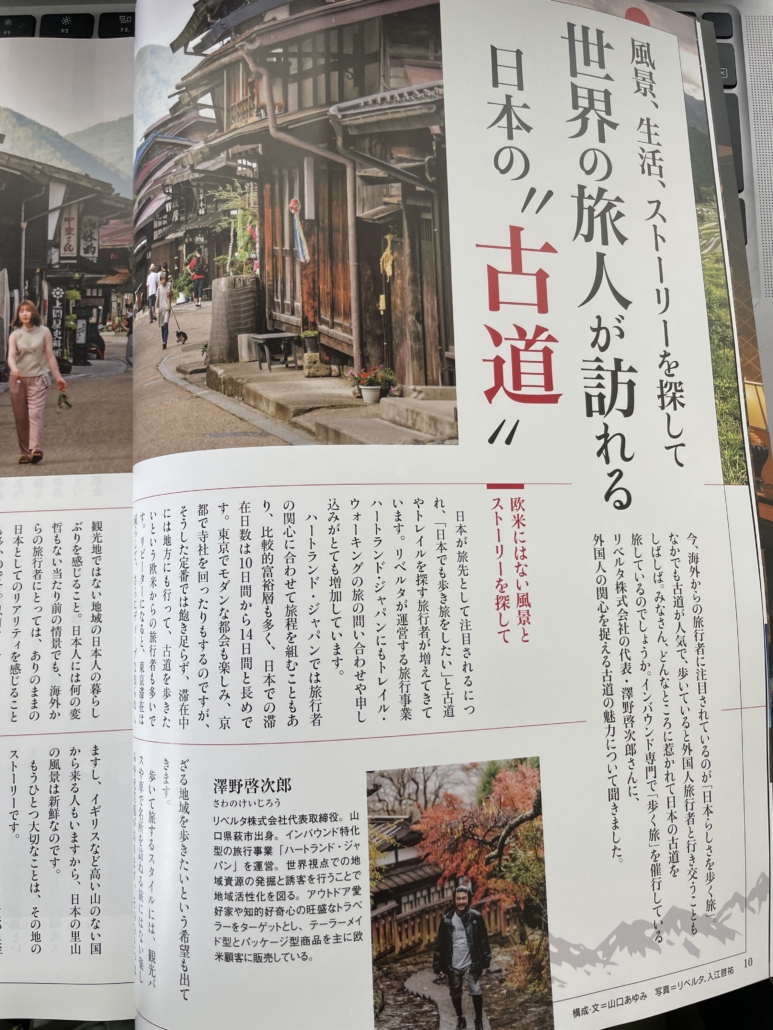
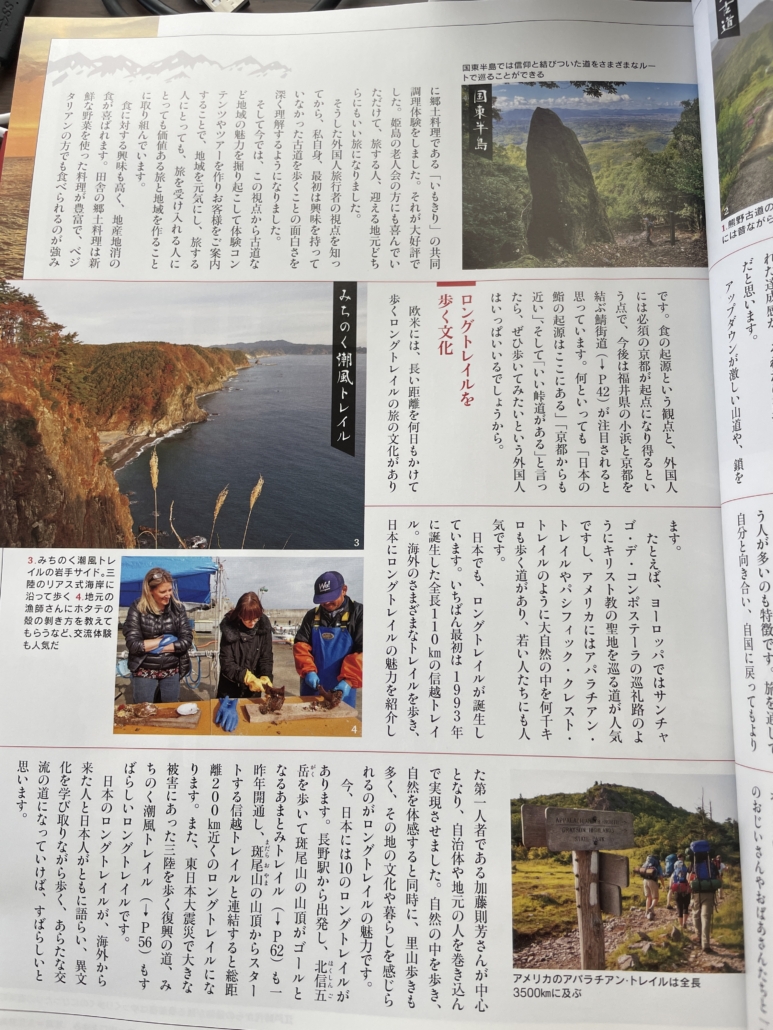

The magazine features the Nakasendo, Tokaido, Kumano Kodo Iseji, Michinoku Coastal Trail, Saba Kaido, Kunisaki Hanto Minemichi Long Trail, and even the Hagi Okan.
We are very happy to see that our friends and guides, who are always a great help to us at Heartland Japan were featured in the magazine, and we were able to feel the joy of connecting people with each other through the ancient roads. We are truly happy.
We hope that more of us and the younger generation will walk along these “ancient roads” as a cool cultural experience.
For our Western clients, walking is a cool culture.
We believe that if we can reimport these values, Japanese people will pay more attention to the local resource of ancient roads, and pay more attention to their preservation and inheritance.
This is our unique approach to regional revitalization from a global perspective.
We will continue to work on regional revitalization from a global perspective utilizing ancient roads!
Let’s walk together!
Information
■ “Nodule” (JTB Publishing)
https://www.nodule.jp/
■ Brand of our inbound business (Tokyo Governor Registered Travel Agency No. 2-7699)
Regional Development Department Site (English)
https://heartlandjapan.com/
■ Liberta inc.(English)
https://liberta-inc.com/en/



